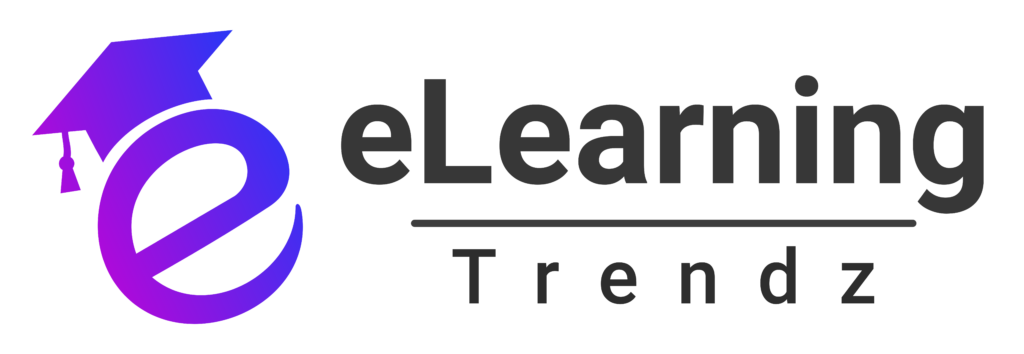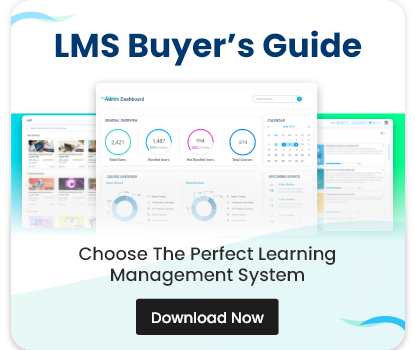What Are AR/VR eLearning Authoring Tools?
AR VR eLearning tools are content creation platforms that allow instructional designers to develop immersive learning experiences using augmented reality and virtual reality technologies. These tools enable businesses to design simulations, interactive environments, and training scenarios that engage learners in a way traditional eLearning methods cannot. By integrating immersive technologies into their training programs, organizations can provide a more hands-on, interactive, and realistic learning experience, especially for remote teams.
How AR/VR eLearning Tools are Revolutionizing Remote Learning
As remote work and virtual training become the norm, organizations are seeking new ways to improve employee engagement and learning outcomes. AR VR eLearning tools offer a range of benefits that can significantly enhance the effectiveness of remote learning. Below are some of the key ways in which these tools are transforming the learning experience:
1. Immersive Learning Environments
Unlike traditional eLearning courses, which primarily rely on text and video-based content, AR VR eLearning tools allow learners to interact with a virtual world. For example, employees can step into a virtual office environment, practice real-world scenarios, or engage with interactive 3D models. This immersion enhances employee engagement by making the learning process more dynamic and realistic. Whether it’s simulating complex machinery operations, customer service scenarios, or leadership challenges, these tools provide learners with hands-on practice that is difficult to replicate with conventional methods.
2. Enhancing Skill Development
AR VR eLearning tools are particularly useful for training employees in high-risk or complex tasks that require practical experience. For instance, industries like healthcare, manufacturing, and engineering can use AR and VR simulations to train workers on equipment handling, surgical procedures, or safety protocols without putting them at risk. The immersive nature of these tools allows employees to practice and refine their skills in a safe, controlled virtual environment, leading to better retention and application in real-world situations.
3. Personalized Learning Pathways
With the help of AI-powered eLearning authoring tools, AR/VR platforms can create personalized learning paths for employees. By analyzing learner behavior and performance data, these systems can adjust the level of difficulty and recommend tailored content based on individual progress. This personalization ensures that employees are always working at the appropriate level, whether they are beginners or experts, which fosters motivation and prevents frustration. AI-driven content customization also leads to better employee engagement and improves the overall learning experience.
4. Real-Time Feedback and Performance Tracking
AR and VR tools integrated with AI-powered content authoring tools for eLearning allow for real-time feedback and performance tracking. For instance, in a VR simulation, learners can receive immediate feedback on their actions, such as correct or incorrect decisions, performance ratings, or safety precautions. This instant feedback loop helps reinforce learning and allows employees to continuously improve their skills, leading to better performance in their actual roles.
The Benefits of Using AR/VR eLearning Tools in Corporate Training
By integrating AR/VR technologies into their training programs, organizations can unlock numerous advantages. Here are some of the key benefits of using AR VR eLearning tools for corporate training:
1. Increased Engagement and Retention
Studies have shown that immersive learning experiences are far more engaging than traditional training methods. AR VR eLearning tools can capture the attention of learners by immersing them in interactive, realistic environments. This increased engagement leads to better retention of information and improved application of skills in real-world scenarios. The use of gamification elements within AR/VR environments, such as points, levels, and rewards, further enhances motivation and learning outcomes.
2. Scalability and Accessibility
One of the biggest challenges in corporate training is scalability. With traditional methods, delivering training to a large number of employees across different locations can be logistically challenging and costly. However, AR VR eLearning tools allow organizations to deliver the same high-quality training experience to remote teams at scale. Whether employees are located in different countries or time zones, they can access immersive training content anytime and anywhere, eliminating the need for costly in-person training sessions.
3. Cost-Effective Training
While the initial investment in AR VR eLearning tools may seem high, the long-term cost savings are significant. Traditional training methods often require physical equipment, trainers, travel expenses, and time away from work. With AR/VR-based training, businesses can eliminate these costs while providing employees with a richer, more interactive learning experience. Additionally, the ability to simulate complex tasks in a virtual environment reduces the need for expensive equipment and training materials.
4. Safe Learning Environment
For industries that involve hazardous tasks, such as construction, aviation, or healthcare, AR VR eLearning tools provide a safe space for employees to practice without the risk of injury. By simulating dangerous scenarios in a virtual environment, learners can gain experience handling high-stakes situations without endangering themselves or others. This makes VR/AR an invaluable tool for safety training and compliance.
How AI-Powered eLearning Authoring Tools Enhance AR/VR Learning Experiences
AI-powered eLearning authoring tools play a crucial role in enhancing AR/VR learning experiences. These tools allow instructional designers to create and manage AR/VR-based content more efficiently. Here’s how AI-powered authoring tools can improve AR/VR training:
1. Content Personalization
AI-driven authoring tools allow for real-time content customization based on learner performance. By analyzing interactions, time spent on tasks, and decision-making patterns, these tools can adjust the content dynamically to suit the learner’s level of understanding. This ensures that each employee is engaged and challenged at the right level, improving the overall learning experience.
2. Streamlined Content Creation
AI-powered content authoring tools for eLearning simplify the process of creating immersive training materials. These tools can automatically generate VR/AR simulations, quizzes, and assessments, saving time for instructional designers. Additionally, AI tools can suggest content improvements and provide insights into how learners interact with the material, making it easier to refine and enhance the training experience.
3. Performance Analytics
AI-powered analytics integrated into AR/VR training systems can track learner performance across various metrics, such as time spent on each module, errors made during simulations, and overall success rates. This data is invaluable for assessing the effectiveness of training programs and identifying areas for improvement.
Future of AR/VR eLearning Tools
The future of AR VR eLearning tools looks incredibly promising. As technology continues to advance, we can expect even more immersive and interactive training experiences. The integration of AI, machine learning, and VR/AR will continue to drive employee engagement, making training more effective, scalable, and accessible. Additionally, the rise of 5G networks will make VR/AR training experiences more seamless and accessible for remote teams, further increasing the value of these tools in corporate eLearning programs.
Conclusion
AR VR eLearning tools are revolutionizing the way corporate training is delivered, providing organizations with a powerful, immersive solution for employee development. By combining the strengths of AR/VR technologies with AI-powered eLearning authoring tools, companies can create engaging, personalized learning experiences that enhance employee engagement and improve overall performance. As AR/VR technologies continue to evolve, they will play an even greater role in shaping the future of corporate learning, offering innovative ways to develop and retain top talent in a rapidly changing business environment.














